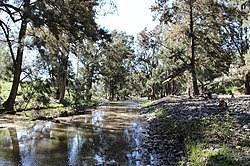
11. COLONG CAVES I first encountered the name "Colong Caves" at Sydney University in 1959. It was the annual Orientation Week for new students and all sorts of clubs and societies sought to attract new members. The Sydney University Speleological Society SUSS) was one of these. Although I have never been to the caves, the memory remains strong. In those days, before the completion of the Warragamba Dam, access was via Camden and the Burragorang Valley. Since then, access has been much longer via the Oberon Stock Route to Batsh Camp near Yerranderie. This is all country of great geological interest. Extract from "The Limestone Deposits of NSW (1986)" by Lishmund, Dawood and Langley . "Locality No. 407 - Colong Caves Limestone Deposit 51 km southeast of Oberon; Caves Reserve 29837, Parish Colong, County Westmoreland. GR 312784, Wollongong 1:250,000 sheet. The Colong Caves limestone deposit is a large, elongated lens which crops out over a distance of 2.3 km sout...





